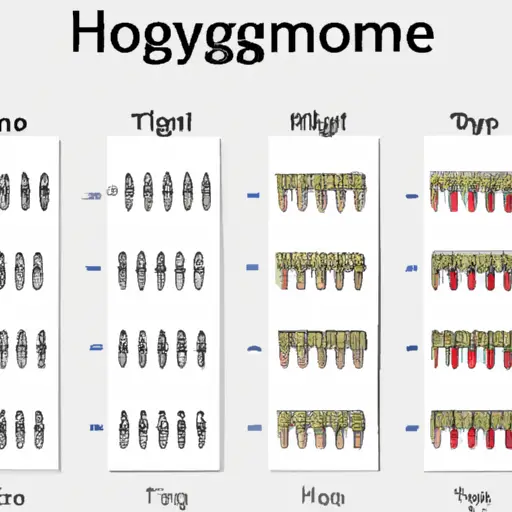Zygosity is the degree of similarity in allelic genes of a living organism. We can broadly describe it as homozygous or heterozygous. Please allow me to take a simple introduction to genetics. Firstly, since the introduction of medicine and specifically genetics various advancements like genetic engineering have been made. Over the recent past years, humans have gathered information about genes and performed various experiments in the lab. Humans have therefore come to understand that with proper research this can change the perspective of the most treatment of diseases. Through science, humans have found out that: the human body is made up of different organs performing a given specific function. These organs are made up of tissues which are in returned composed of cells. Each cell is made of various parts known as organelles. One of the organelles is the chromosome which houses the gene. In simple terms, the gene is the basic unit of heredity located inside the cell’s chromosomes. It is located specifically at the locus of a chromosome. Humans have twenty-three chromosome pairs and are said to be diploid as they possess two sets of chromosomes. Most of the biological processes are usually controlled by the gene. Without the gene, some of the most basic biological processes would fail to work as expected. The gene is responsible for most chemical processes as well as the physical traits which refer to physical attributes. The gene is made up of alleles. An allele is a variation of a trait in a gene. There is usually various trait e.g. tallness, eye color or even sex of an organism. A genotype then results from the combination of these alleles. A genotype is, therefore, a combination of alleles which make up the gene. The word “homo” in homozygous means same while, the prefix “hetero” means different. Therefore, an individual carrying two identical alleles, for example, TT or it is said to be homozygous while one having different alleles in their gene, for example, Tt are said to be heterozygous. A trait can thus be either homozygous or heterozygous. When two similar alleles combine to yield a trait, the trait is said to be homozygous. There are various differences between heterozygous and homozygous individual which include:
So What is the Difference Between Heterozygous And Homozygous Individuals?
What are the difference Heterozygous and Homozygous Individuals?
1. Homozygous individuals carry similar or identical alleles of a trait in their genes for example using T as a representation of the tallness dominant factor homozygous individuals will exhibit a TT and a corresponding tt for the recessive type of genotype while for heterozygous individuals, they have different alleles in the resulting gene, for example, Tt for the tall state. It should, however, be noted that; in most cases, for a heterozygous individual the dominant trait is usually expressed over the recessive one or overrides the recessive trait. The dominant trait is usually expressed in a capital letter while the recessive one is in small letters when written or typed.
2. Homozygous individual bear either a dominant or recessive allele but for a heterozygous individual both the dominant and recessive alleles are present in the genotype. An instance of the homozygous individual is a purely tall individual e.g. TT and one whose both allele are dominant or a purely short individual e.g. tt whose both allele are recessive. For the heterozygous individual, this can only be exhibited as Tt and not both at the same time.
3. A breed between two similar homozygous individuals for example both being TT or both being tt will yield to all its children being pure but for any cross between a heterozygous individual with any other kind of individual will result to a mixture of some impure and pure breeds. Heterozygous individuals cannot, therefore, interbreed to yield all pure individuals as compared to such a possibility for homozygous individuals. Therefore heterozygous individuals seldom yield pure offspring.
4. A cross breed between similar homozygous individuals will not lead to any extra hybrid vigor but for heterozygous individuals, the resultant individuals may easily result in increased vigor. Hybrid vigor is the superiority in characteristics shown when two individuals are crossed. This results in improved breed quality as some good attributes may be inherited. These improved characteristics include extra resistance to diseases.
5. A homozygous individual produces one type of gamete while for heterozygous individuals two types of gametes are yielded. Gametes are usually responsible for sexual characteristics. For homozygous individuals, they can only have: either have the XX genotypes or the Y genotype but for heterozygous individuals, the genotype yielded by the offspring can include the XY and the XX which make up different gametes.


